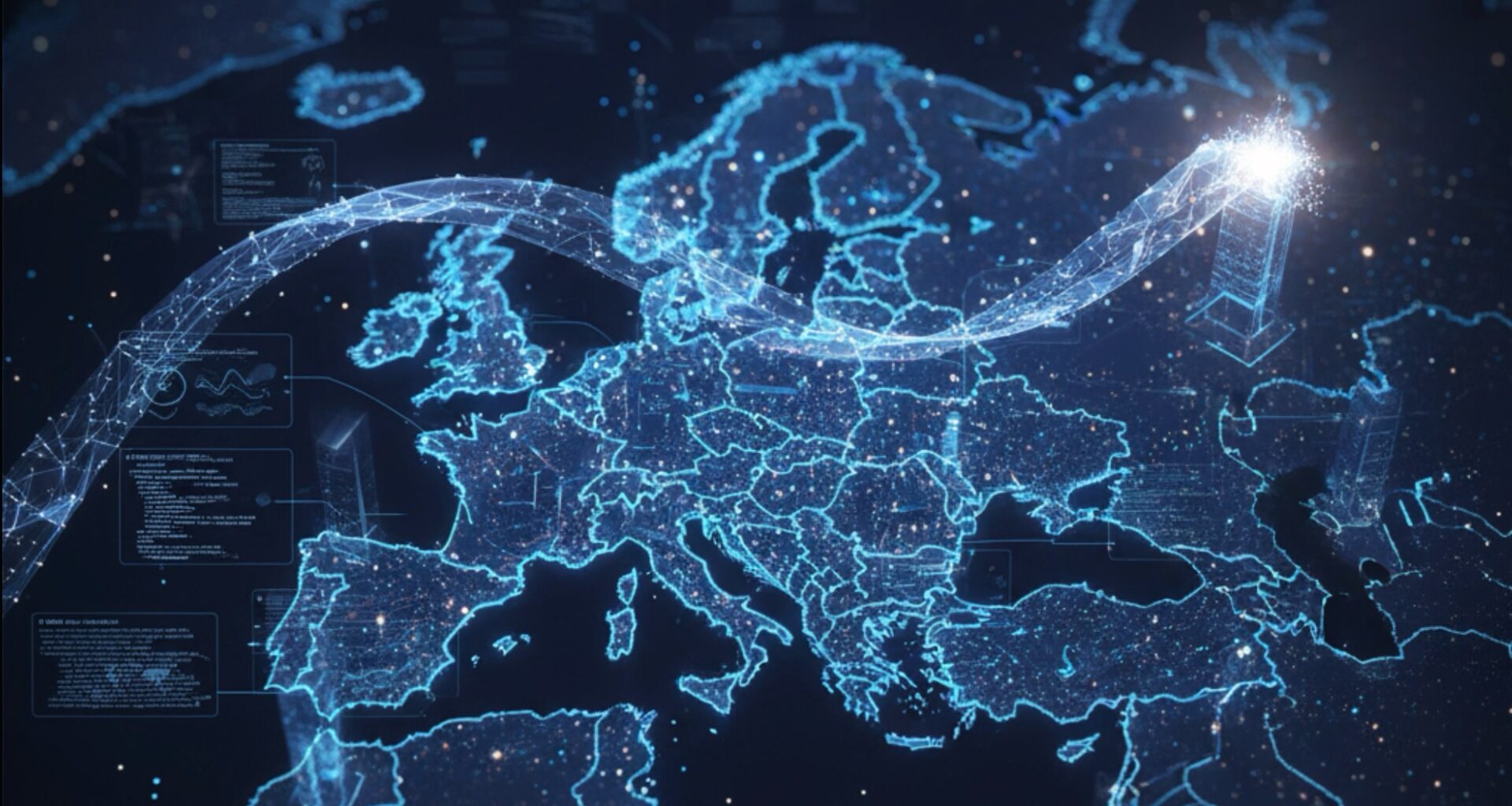Why “Sovereign AI” Is Now Core Strategy
Europe is converging privacy, security, and competitiveness into one agenda: AI under European control. In practice that means sovereign clouds (EU data residency, EU-only operations, independent governance) and sovereign AI stacks (EU-built or EU-operated models, auditable, interoperable). The EU AI Act accelerates this with phased obligations for general-purpose AI, transparency, testing, and incident handling through 2027.
Country Snapshots (confirmed moves & credible signals)
Germany: OpenAI pilot via Delos on Azure; AWS sovereign region
- Confirmed: OpenAI for Germany (SAP + OpenAI), operated through Delos Cloud on Microsoft Azure for the public sector (ministries, agencies, research), with Delos scaling to ~4,000 GPUs.
- AWS European Sovereign Cloud: first EU-only region in Brandenburg (EU-resident staff, separate control and trust services).
- Google x T-Systems Sovereign Cloud: German data residency, EU support, external key management by T-Systems.
Take: Germany is the reference market for sovereign AI, running parallel tracks (OpenAI pilot, AWS sovereign region, Google sovereign controls). Expect copy-cat models for sectors with strict requirements (health, finance, defense).
France: “Cloud de Confiance” + Mistral as EU champion
- Bleu (Orange + Capgemini + Microsoft): SecNumCloud-compliant Azure services in France under French operational control.
- Mistral AI: Europe’s flagship model builder; major funding, open(ish) releases, focus on reasoning; strong political and industry backing.
Take: France couples trusted-cloud labels with European models. Expect deeper integration of Mistral with EU HPC and sovereign clouds.
Spain: Language sovereignty + edge AI
- Government × IBM: open, Spanish/co-official language models (Castilian, Catalan, Basque, Galician) built and governed in Spain.
- Telefónica × NVIDIA: edge AI fabric with hundreds of GPUs for low-latency, privacy-preserving inference inside Spain’s network.
Take: Spain is a model for linguistic sovereignty and decentralized inference—ideal for public services and regulated domains.
Italy: Sovereign cloud build-out + national models
- Microsoft: €4.3B investment; “Italy North” among Azure’s largest EU regions; EU data-boundary commitments; workforce upskilling.
- Fastweb: DGX SuperPOD “NeXXt AI Factory” and MIIA, an Italian-language LLM; first telco-native sovereign AI suite.
- CINECA/EuroHPC: Leonardo/LISA upgrades and access for European AI training.
Take: Italy blends hyperscaler capacity under EU constraints with national compute and model initiatives.
Netherlands: Leverage via semiconductors & policy
- ASML → Mistral lead investor: strategic chip-to-model axis linking NL and EU AI scale-up.
- Acts as cloud/network hub and pushes Gaia-X hubs & data spaces.
Take: The Dutch amplify Europe’s AI through industry capital, connectivity, and governance expertise.
EU-Level Pillars: Gaia-X, Data Spaces & Regulation
- Gaia-X: from “build an EU hyperscaler” to trust/label/interoperability framework (transparency, portability, compliance). The Fulcrum concept targets a multi-provider cloud/compute exchange so workloads can roam across compliant EU providers.
- EU AI Act: phased obligations for general-purpose AI (transparency, evaluations, copyright safeguards, incident processes). A Code of Practice operationalizes compliance for providers and deployers.
- Data Governance/Data Act: trusted data spaces and intermediaries unlock cross-border training data under European rules; portability and anti-lock-in by design.
Broader Market Moves (confirmed)
- AWS European Sovereign Cloud: separate EU cloud with its own governance, SOC, certificate authority, networking; first region Germany.
- Microsoft Sovereign Solutions: National Partner Clouds (e.g., Bleu in FR; Delos-operated stack in DE), Azure EU Data Boundary.
- Google Sovereign Controls: with T-Systems (DE) and Thales (FR)—external key management, EU-only support paths, strict residency.
- OpenAI in Europe: OpenAI for Germany as a sovereign public-sector pilot via SAP/Delos (Azure).
- Telcos × NVIDIA: Orange, Telefónica, Fastweb and others build edge/AI fabrics for on-network inference and agentic workloads.
5–10 Year Outlook (2026–2035)
1) Pan-EU sovereign-cloud meshes
By 2027–2030, AWS, Azure, and Google sovereign offerings operate in multiple EU states; Gaia-X labels shape public/regulated procurement; Fulcrum-like exchanges enable workload roaming across EU providers. Result: multi-cloud sovereignty replaces single-vendor lock-in.
2) European model libraries + domain stacks
Europe curates multilingual and domain-specific LLMs (health, industry, climate, justice)—many open or inspectable. Public data spaces feed training/fine-tuning lawfully and reproducibly.
3) “AI fabrics”: Edge + HPC as twin backbones
EuroHPC centers handle training/fine-tune; telco edge handles privacy-sensitive, low-latency inference. National AI factories deliver thousands of GPUs for research and industry.
4) Compliance features by design
EU-specific model and platform builds expose transparency reports, eval/red-team artifacts, copyright controls, and incident pipelines—natively integrated into cloud operations. Expect a boom in EU-native audit, safety, and governance tooling.
5) Competition & risk
- Most likely: Co-existence—US tech under EU operational control plus strong EU models in key domains.
- Risks: Cost deltas vs. global clouds; power/cooling/network constraints; talent competition.
- Upside: Europe exports “governance tech” (compliance stacks, auditing, privacy-preserving ML) as a global standard.
Bottom Line
Europe is turning sovereignty into an architectural principle: data centers, key management, staffing, law, and audit—all inside the EU. Germany (OpenAI pilot via Delos/Azure; AWS sovereign region), France (Bleu/SecNumCloud + Mistral), Spain (state-backed language LLMs + edge fabric), and Italy (€4.3B Microsoft build-out; Fastweb MIIA; CINECA) illustrate complementary paths. With the AI Act as metronome, a federated, auditable AI ecosystem is emerging—mixing global innovation with European control. Over the next decade, winners will be those who blend technical excellence with sovereignty-by-design.





